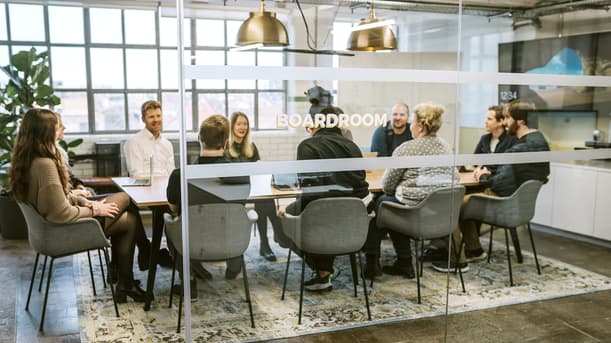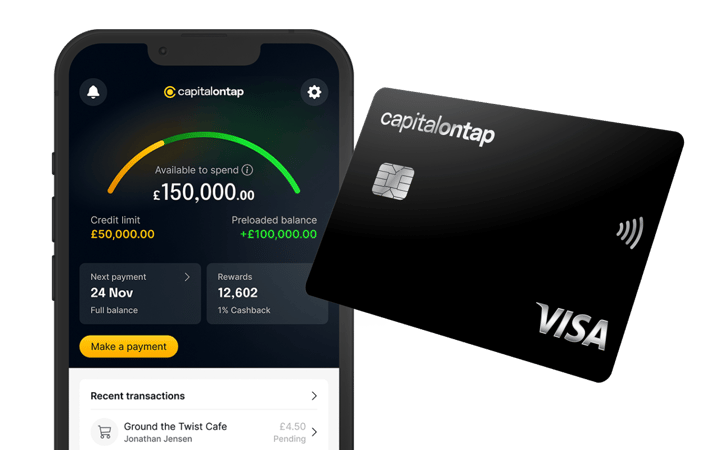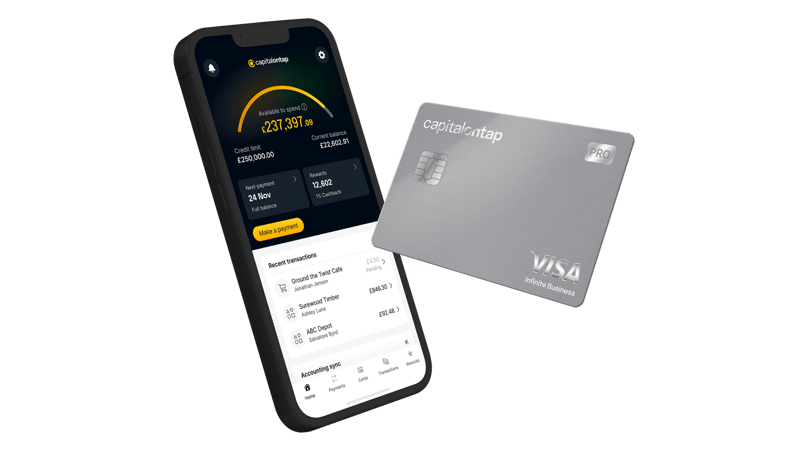Equality and diversity aren't just buzzwords at Capital on Tap - they're hugely important to who we are. We celebrate differences in race, gender, sexual orientation, religion, ethnicity, abilities, national origin - all the things that make each of us unique. Our goal is to create an inclusive environment where talented people from all walks of life can truly be themselves. A place where you're free to contribute your authentic perspectives and do amazing work, without having to hide any part of your identity.
What is the gender pay gap (GPG)?
The gender pay gap (GPG) is the difference between the average (mean or median) earnings of men and women across a workforce. It’s expressed as a percentage of men’s earnings. As part of the GPG report, the bonus pay gap is also calculated - this is the difference between men’s and women’s bonuses over the year, expressed as a percentage of men’s bonuses. The data used to calculate each pay gap uses the 5th April snapshot date each year in line with the government’s reporting requirements.
In our report, gender definitions are based on current legal definitions and collection requirements. We recognise that not everyone’s gender identity fits within this binary, and not everyone is yet legally able to be defined as the gender that they are. In the future, we hope this report can become a more inclusive representation.
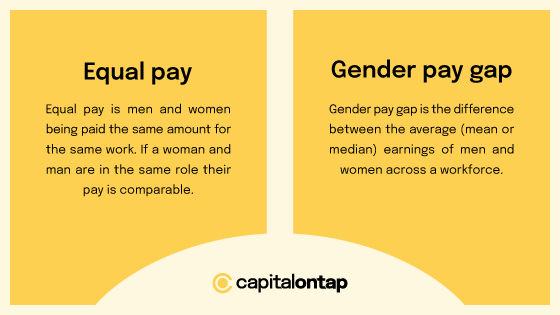
What is the difference between the gender pay gap (GPG) and equal pay?
Equal pay and the gender pay gap (GPG) are often confused, but they measure different things.
Equal pay means that men and women performing the same or equivalent roles receive equal compensation. At Capital on Tap, we ensure that all roles are paid fairly and equitably, in line with the Equality Act 2010, which makes equal pay a legal requirement.
The gender pay gap, on the other hand, is not a measure of equal pay. Instead, it looks at the overall distribution of men and women across different roles within a company. It highlights trends such as whether men are more likely to be in senior or high-demand roles (e.g., engineering), which can create an average pay gap between genders even when equal pay policies are in place.
2024 GPG salary data
This data only applies to Capital on Tap’s UK employees.
This report aims to provide a transparent overview of the current gender pay gap situation within the organisation and outline the measures being taken to address and reduce the gap.
This report, produced in 2025, uses a snapshot of data from April 2024 to calculate the gender pay gap (GPG). We present both the mean and median GPG calculations as a percentage of men's pay.
For a point of comparison, we've included the mean and median GPG data for both 2024 and 2023:
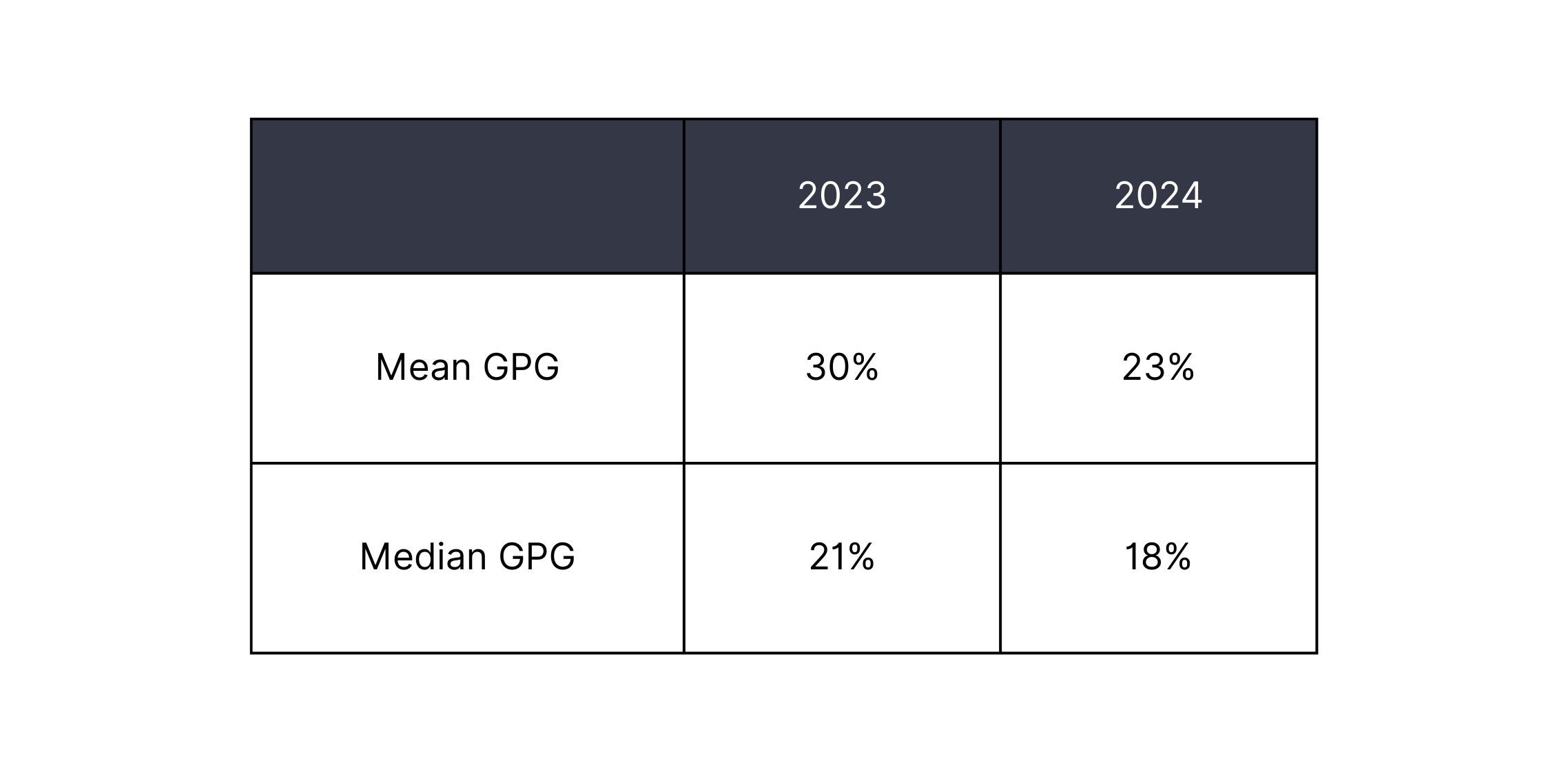
We’re pleased to see a reduction in our gender pay gap this year, with our mean GPG decreasing from 30% in 2023 to 23% in 2024 and our median GPG improving from 21% to 18%. This positive shift reflects the impact of our ongoing efforts to create more equitable opportunities for women across the organisation.
While this progress is encouraging, we recognise that there is still work to do. The primary driver of our gender pay gap remains the lower proportion of women in senior leadership roles and in higher-paying fields, such as sales and engineering. We are committed to continuing our focus on diversifying our talent pipelines, supporting career progression, and ensuring equal access to high-earning opportunities.
Later in this report, we will outline the key initiatives that have contributed to this improvement and the steps we are taking to build on this momentum. We remain committed to addressing the underlying causes of our gender pay gap and ensuring that Capital on Tap continues to be a place where talent and opportunity are equally accessible to all.
Understanding our gender pay gap through quartile data
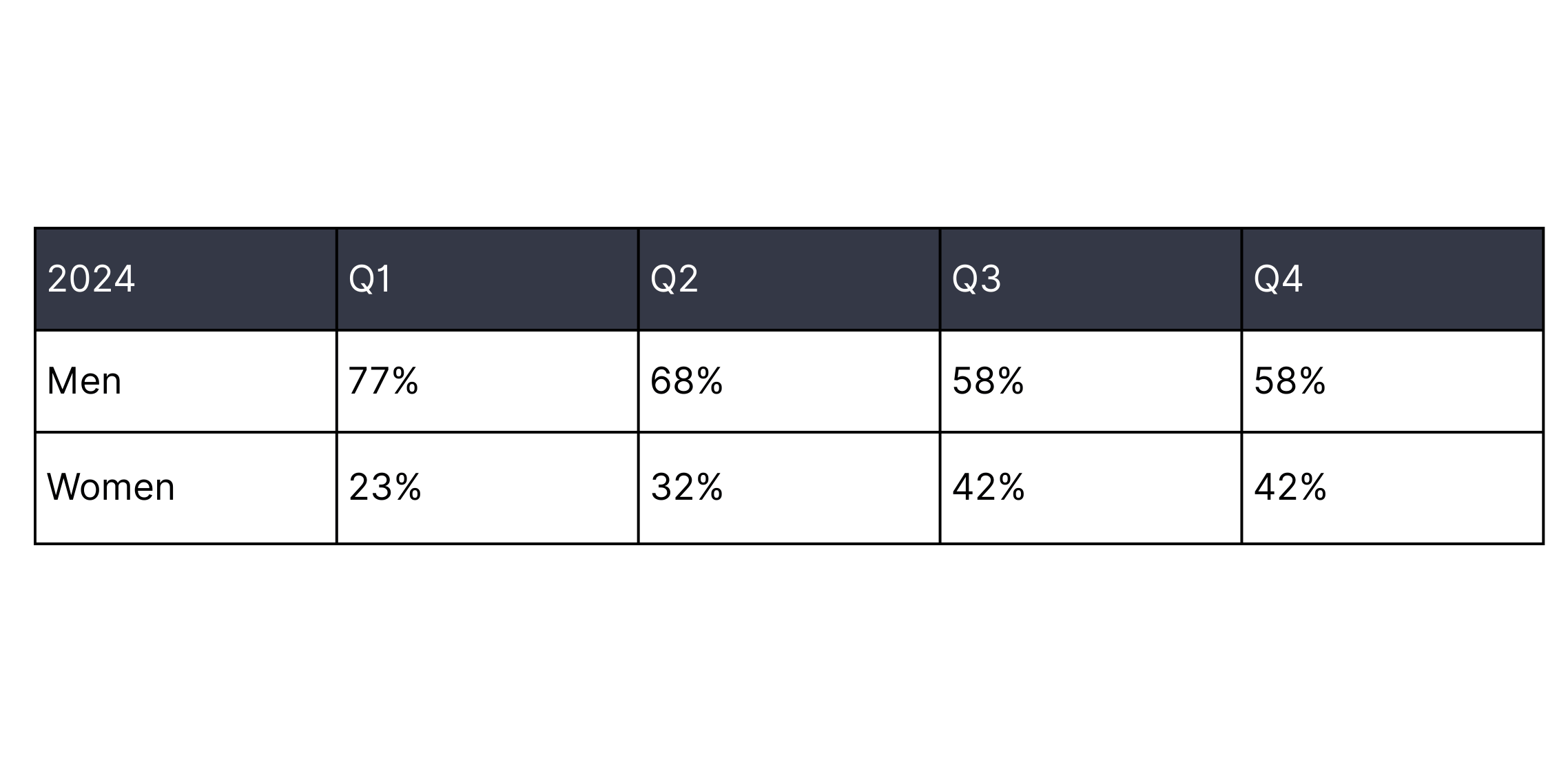
Our quartile data helps illustrate why our gender pay gap has increased and provides insight into the distribution of men and women across different pay levels in the company.
-
Q1 (Top 25% of earners): Men make up 77%, meaning that a significant majority of our highest-paid roles are held by men.
-
Q2–Q3 (Mid-range earners): The proportion of women increases, with 32% in Q2 and 42% in Q3, but men still hold the majority of these positions.
-
Q4 (Lowest 25% of earners): Women are most represented here at 42%, nearly reaching parity with men.
Since our company during 2024 had more men overall (64% men to 36% women), this naturally influences the distribution across quartiles. However, the biggest contributor to the gender pay gap is that men are disproportionately represented in the highest-paying roles. As mentioned this is particularly driven by our growth in engineering, where female representation remains low—a challenge seen across the industry.
While we are making progress in increasing female representation in the workforce, this data highlights the continued need to focus on career progression and access to senior, higher-paid roles for women. Later in this report, we will outline the steps we are taking to reduce this gap and create a more balanced pay distribution.
2024 bonus pay gap data
In 2024, 34% of men and 41% of women across the organisation received a bonus. While a slightly higher proportion of women received bonuses, there is still a notable difference in the average bonus amounts awarded, as shown below:
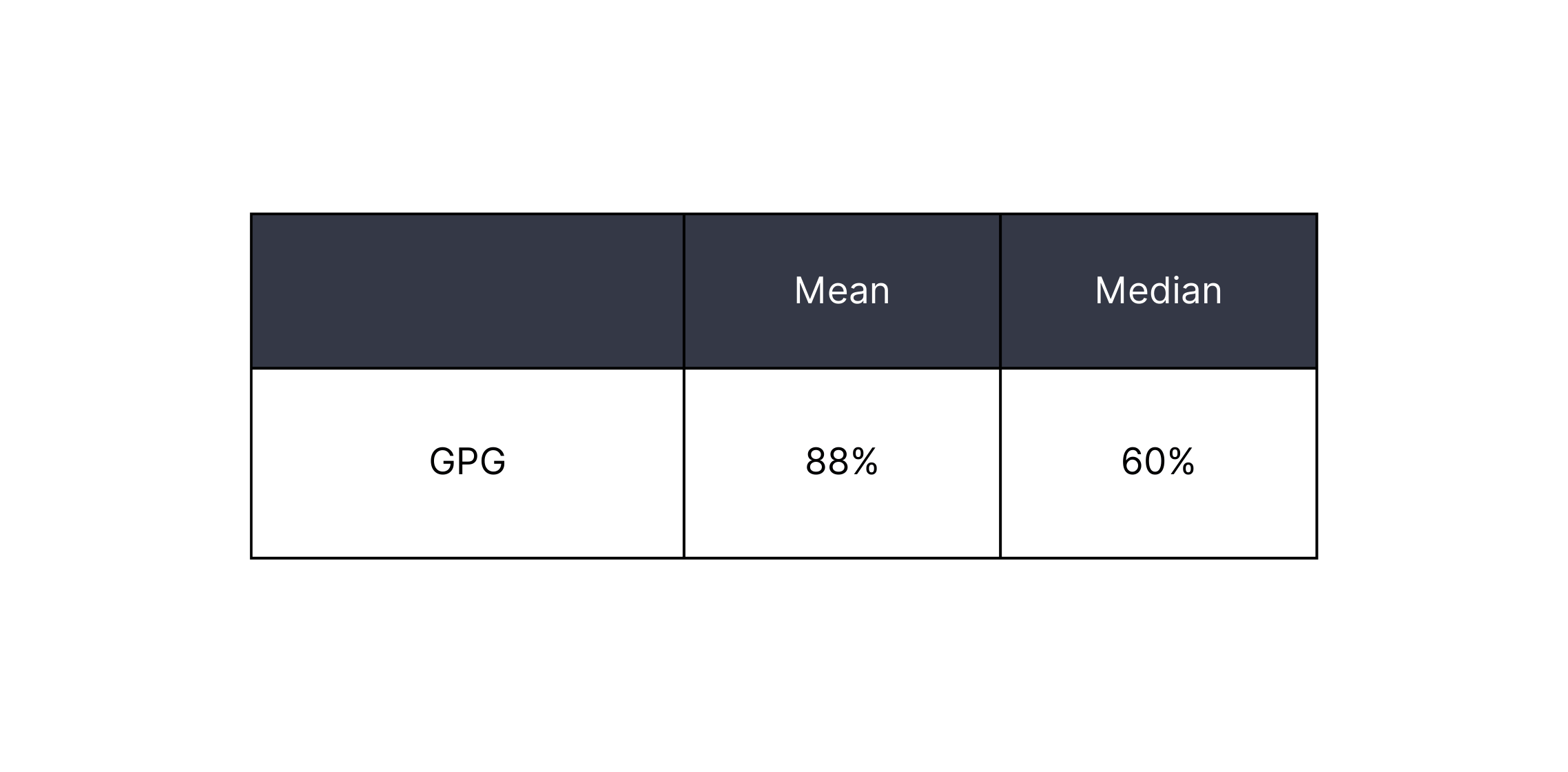
The primary driver of this disparity is the structure of our bonus-earning teams. At Capital on Tap, bonuses are awarded in three areas: our sales team and two customer supporting functions.
-
Our sales team, which is predominantly male, has the highest earning potential through commission-based bonuses. These roles offer significantly higher bonuses compared to other teams.
-
Our customer support teams, where we have a higher proportion of women, receive lower-value bonuses compared to sales. This contributes to the overall gender bonus gap, as more women are in roles with lower bonus potential.
While a higher proportion of women received bonuses overall, the average bonus value for men is significantly higher, largely due to their greater representation in sales roles.
We recognise this as an area to continue monitoring and remain focused on ensuring equal access to career progression and high-earning opportunities for all employees. To help address this, we are actively working to increase the number of women in sales roles, where bonus potential is highest.
-
We are taking proactive steps to diversify our candidate pool through targeted sourcing and positive action.
-
We are exploring partnerships with women in sales recruitment channels to attract more female candidates.
-
Within sales, we are focused on retention—we hold regular women in sales catch-ups to understand how we can better support and develop our female sales employees.
-
We’re proud to see our efforts making an impact, with women in our sales team being nominated for industry awards in 2024.
While we know there’s more to do, we’re committed to creating an environment where women feel supported, have access to high-earning roles, and can build long-term careers in sales, something we hope will help to reduce this bonus gap over time.
What we’re doing to close the gender pay gap
Closing the gender pay gap remains an ongoing priority for us. We are committed to taking meaningful action to ensure fair pay, equal opportunities, and a more balanced representation of women at all levels of our organisation. Here are some of the key initiatives we have in place, along with plans to further strengthen our efforts in closing the gap.
Strengthening pay and performance processes
Formal performance and pay review process
In September 2024, we introduced a structured performance and pay review process to ensure that pay and promotion decisions are based on clear, consistent criteria. By implementing formal reviews and calibration sessions, we help safeguard against bias and ensure that compensation and career progression decisions are fair, transparent, and aligned with our company values and career frameworks.
Standardised career progression frameworks
We have clear, structured career progression frameworks accessible to every employee, providing transparent pathways for development and promotion. By reviewing and refining these frameworks annually, we ensure that all employees—regardless of gender—have equal access to growth opportunities.
Manager training for inclusive leadership
Empowering managers is a key part of our strategy for 2025. We are investing in manager training to enhance their ability to conduct performance and development conversations effectively. This includes raising awareness of potential gender differences in learning and career progression styles to help managers better support, develop, and promote women across the business.
Fostering a more inclusive workplace
Women’s employee resource group (ERG)
To better understand and address the challenges women face, we launched the women’s employee resource group (ERG). This group provides a safe space for women to share experiences, raise concerns, and propose solutions, helping us to continuously improve policies, initiatives, and the overall working environment.
Enhancing support for women’s health
As part of our commitment to supporting women’s health and wellbeing, in 2024 we enhanced our maternity package to provide better support for employees during this important life stage. In addition, we introduced a Women’s Health Benefit in Jan 2025, which includes coverage for diagnostic and fertility treatments to help address the women’s health gap. This benefit is designed to provide women with greater access to care and support, empowering them to make choices about their health without worrying about financial barriers. We believe these improvements will not only help us retain our current female employees, ensuring they feel supported at all stages of their careers, but also attract more women to our roles. By demonstrating our commitment to women’s health, we aim to foster a more inclusive environment that supports work-life balance and promotes long-term career success for women at Capital on Tap.
Driving diversity in hiring & progression
Proactive talent sourcing & fair hiring practices
Our Talent Team proactively sources candidates, minimising reliance on traditional applications and actively broadening our talent pool to enhance diversity. By tracking diversity data through our Applicant Tracking System, we can set and measure relevant targets. Additionally, all hiring managers receive ongoing training in inclusive hiring practices and structured interview techniques, ensuring a fair and positive experience for every candidate.
Graduate Engineering Programme
To increase female representation in engineering, we launched a Graduate Engineering Programme, targeting a more diverse talent pool. Across the process we saw a higher proportion of female candidates than the industry average, reinforcing the value of this initiative. We remain committed to investing in early-career talent and refining our approach to increase gender diversity in future cohorts.
Capital on Tap’s ongoing commitment
At Capital on Tap, we are committed to creating an inclusive, equitable environment where everyone has the opportunity to thrive. While there are challenges to overcome, we believe the steps outlined in this report will bring us closer to closing the gender pay gap and fostering a truly diverse and dynamic workplace. We will continue to monitor progress, refine our strategies, and remain transparent with our employees as we work toward achieving greater gender equality. We are determined to bridge the gender pay gap and harness the power of diversity for long-term success.
